|
|
|
|
|
|
|
 |
 |
|
MODERN
JAPAN BRINGS TO MIND IMAGES of
steaming noodle bars, teeming streets, cutting-edge fashion, world-class
technology and innovation, and, of course, stunning natural landscapes.
Beneath the surface of this diverse culture, however, there beats a very
ancient heart. The battlefield arts that have existed in Japan for millennia
have greatly influenced Japanese culture, thinking, and history but, in the
context of martial-arts history, the permutations that have become
incredibly popular around the world-such as karate, aikido, and judo-are
relative newcomers. |
|
Japan is one of the major
regions from which most of the martial arts practiced today originate. Only
China and Korea can boast a similar heritage. In addition to the influence
of its ancient traditions and battlefield arts, Japan has also made many
important contributions to modern martial-arts practice. Perhaps the most
well-known and widely adopted is the colored belt system-used to grade
students according to rank and experience. Belts range in color from white
through the spectrum of the rainbow to black, after which different degrees,
or "dans," are awarded. Devised in the 19th century by
Kano Jigoro, the founder of judo, the
system is now used in many fields of martial art. |
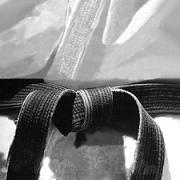 |
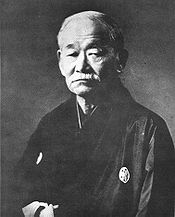 |
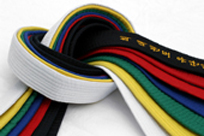 |
|
Judo was also one of the first
of the martial arts to be thoroughly codified. By combining the throwing and
grappling aspects of jujutsu with elements from other wrestling arts, and
standardizing the new art into a coherent system, Jigoro sowed the seeds for
the sporting phenomenon that judo has become. Although many of the
techniques were already prevalent in wrestling arts around the world, the
standardization of the judo training syllabus allowed it to be taught
easily, and to a good standard. This undoubtedly led to judo's widespread
and rapid popularization.
Voices
from the past
The ancient warriors of Japan
left behind a fascinating legacy of literature devoted to the martial code
and the philosophical thought of the warrior. Bushido: The Soul of Japan,
written in 1899 by Inazo Nitobe, popularized the term "bushido," meaning
"the way of the warrior." As a code, bushido cites seven virtues that are
held in the greatest regard within the warrior culture: honor, loyalty,
courage, benevolence, justice, veracity, and politeness.
|
The Forty-Seven Ronin,
the true story of an event that came to represent the ideal of how warriors
should behave, provides an earlier example of Japan's martial literary
legacy and the ethical code of bushido. The story revolve; around 47 samurai
warriors in the service of Asano Naganori, the Lord of Ako, on the island of
Honshu.
While on a visit to the court of the Shogun of Tokyo, Naganori was
insulted by another Lord, at which point he unsheathed his sword and struck
the man had offended him. It was considered extremely bad manners to draw a
sword in the court of the Shogun, Naganori was ordered to commit "seppuku,"
a ritualized form of suicide. |
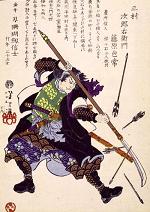 |
|
On his death the 47 warriors became
ronin - samurai without a master - and vowed vengeance on the man who had
insulted their master and provoked his suicide. They left their homes and
families to enact a plan of revenge. To avoid raising suspicion, they posed
as drunkards on the streets Tokyo for almost two years, until an opportunity
arose on December 14, 1702. They crept into the Lord's home and killed him,
immediately surrendering themselves to the authorities, even though they
knew their actions were punishable by death. They then committed ritual
suicide at the tomb of their late master.Although today we may consider this
to be an extreme example of loyalty, it highlights the tradition from which
martial artists fashion their attitudes and underlying philosophical
principles |
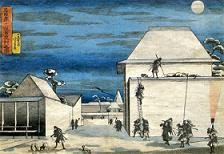 |
|
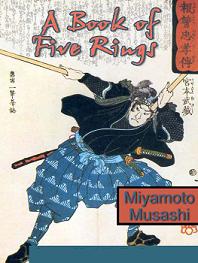 |
A
unique text
The 17th-century work by
Miyamoto Musashi, Go Rin No Sho, or The Book of the Five Rings, is
considered a major classic in martial philosophy and military strategy.
Musashi was a samurai warrior, and the book describes his numerous duels and
his unique style of twin swordsmanship. It focuses on the spirit of martial
arts that can only be attained after rigorous physical and technical
training. The text is divided into five scrolls-Earth, Water, Fire, Wind,
and Sky- fundamental elements that often feature in Eastern philosophical
literature. |
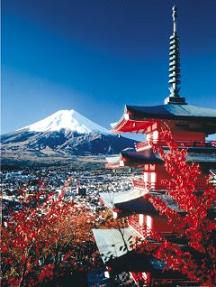 |
Outside influence
Although an island nation,
Japan shares much common heritage with China; in fact, its main writing
script, Kanji, is derived from Chinese characters. Its major religions
include Buddhism, Christianity, and Shinto, which many Buddhists also
follow. Buddhism was imported to Japan from Korea in 552 CE. Along with
Confucianism (an ancient Chinese philosophical and ethical system that
originates from the teachings of the early Chinese philosopher, Confucius)
Buddhism has played an important part in the shaping of Japanese thought,
culture, and martial arts-in particular the emphasis that many of the arts
place on oneness with nature and the universe, and the development of
personal virtue. |
 |
|
Enduring loyalty
The Japanese are renowned for
placing emphasis on the group as opposed to the individual, and great
importance is attached to two very different types of interpersonal
relationship: the reciprocal and the asymmetrical. A reciprocal
relationship, as the name suggests, is mutually beneficial, with partners
aiming to fulfill the reciprocal obligations by agreeing to work together
and help each other, for example, in a collaboration between two business
partners, or in a marriage between a husband and wife.
An asymmetrical relationship
represents an inferior and superior partnership, in which the inferior
partner is in debt to the superior partner and neither of them expect that
debt to be repaid. Bound to his Master for life, the discipleship that a
martial arts' student experiences is a classic example of this. According to
the asymmetrical view, the student will never be able to repay the debt he
owes for the bestowal of special skills and knowledge upon him by the
Master.
The emphasis on both the unity
of the group and the asymmetrical relationship is a fundamental element of
Japanese martial arts' culture, and understanding its importance goes a long
way towards explaining the loyalty that almost all practitioners feel toward
their own group, their teacher, and their art.
|
|
 |
Evolution of the arts
There are many accounts of how
Japanese martial arts evolved into the forms that we recognize today.
Japanese interest in Chinese culture began during the Tang dynasty (618-907
CE) and cross-fertilization of ideas between the two countries was
widespread during this period, especially concerning architecture and
design, religion, and martial arts.
The flowering of
Buddhism in Japan had a profound effect on Japanese martial arts, especially
during the Nara period (710-784 CE), which represents one of the most active
periods of cultural imports into Japan. Many Japanese traveled to China to
study Buddhism, some of whom may have brought back kung-fu methods to Japan
and Okinawa. Japan also has a long history of Buddhist pilgrims from the
Korean peninsula, and they are also likely to have had some influence on
Japan's cultural evolution.
|
|
During the era of The
Samurai,
Japanese swordsmiths were responsible for producing what are widely regarded
as the finest swords ever made. These highly skilled craftsmen employed a
number of complex methods to forge lightweight, exceptionally hard,
razor-sharp blades-weapons that helped elevate the samurai to legendary
status. Parts of the sword would be embellished with elaborate engraving and
inlay work. The scabbard was often made of lacquered wood decorated with
designs taken from mythology or nature. |
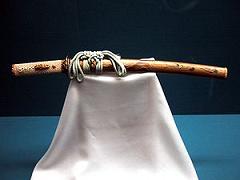 |
|
 |
Changing times
The Edo period (1603-1867) was
another crucial time in the development of Japanese martial arts,
particularly the sword arts. Prior to this period, when warriors fought
multiple opponents on the battlefield, sword techniques naturally favored
the use of different angles of attack, various blocking and deflecting
techniques, and cuts aimed at the quick kill with the minimum expenditure of
energy. However, because the Edo period was largely a peaceful time in
Japanese history, dueling between individuals became more common than armed
conflict between groups of militia. In swordsmanship, this led to the
concept of "one cut, one kill"-whereby two warriors engaged in a duel would
intend for the first cut to make the kill. This changed the training focus
and techniques used in Japanese martial arts entirely. |
|
Modern
developments
The most recent development in
Japanese martial history was the ban on the wearing of a sword in public,
imposed by the government in 1876, which fueled the growth of unarmed
combat, introduction of this law effectively saw an end the domination of
the samurai, and encouraged an interest among the civilian population in the
"empty-hand" methods of Japanese martial arts. It was a very important time
in the evolution of many systems.
|
|
|













